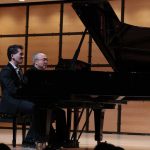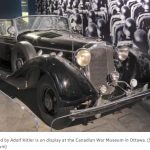照片选自《朝鲜:我们第一次战败》(Korea : The First War We Lost)。作者贝文-亚历山大(Bevin Alexander)朝鲜战争期间为美陆军部派驻前线的战史分遣队队长,后长期为美国陆军及美国政府撰写专题报告,同时兼任某些大报的自由撰稿人。曾长期任教于弗吉尼亚大学。内容简介:本书是第一部由专业的陆军战史学家撰写的著作,全书努力把握历史真实性,全面审视朝鲜战争与中美关系,以及战争带来的后果。
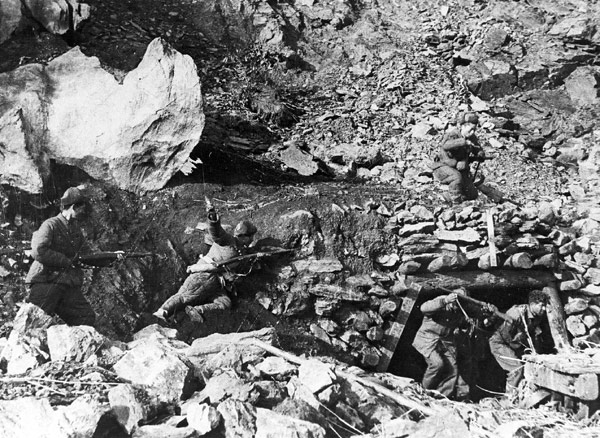
61. Red Chinese soldiers cover Americans emerging from a cave to surrender. (Eastphoto.)
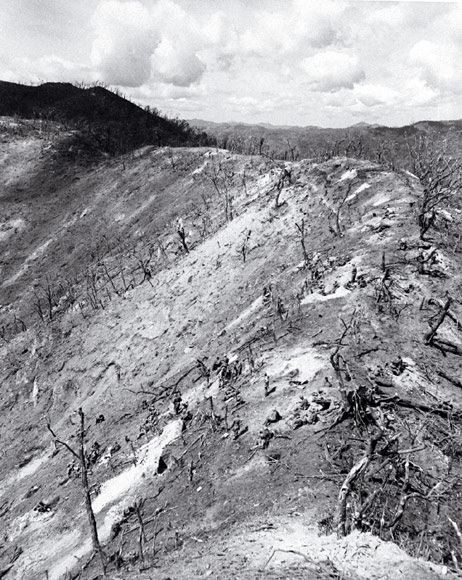
62. This is Bloody Ridge, occupied by survivors of the 9th Infantry Regiment, after it was captured on September 5, 1951. It cost 2,700 American and South Korean casualties and an estimated 15,000 North Korean casualties. The battle of Heartbreak Ridge, which followed Bloody Ridge, claimed 3,700 American and French casualties and an estimated 25,000 North Koreans and Chinese. (U.S. Army photo.)
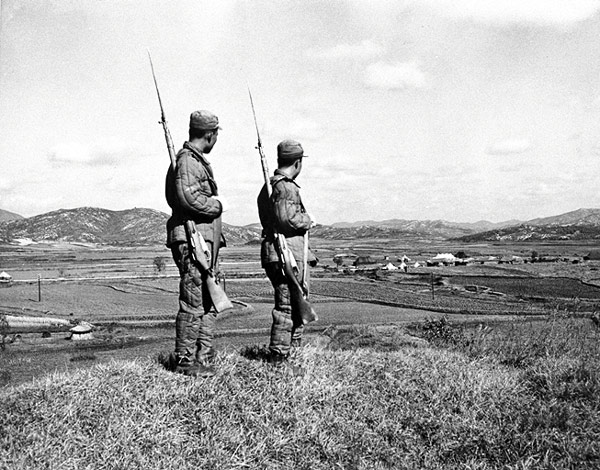
63. Two Chinese Communist soldiers in their standard padded cotton uniforms stand guard on the edge of the neutral zone at Panmunjom, midway between the communist and United Nations lines, where the two-year truce talks were largely held. (U.S. Navy photo.)
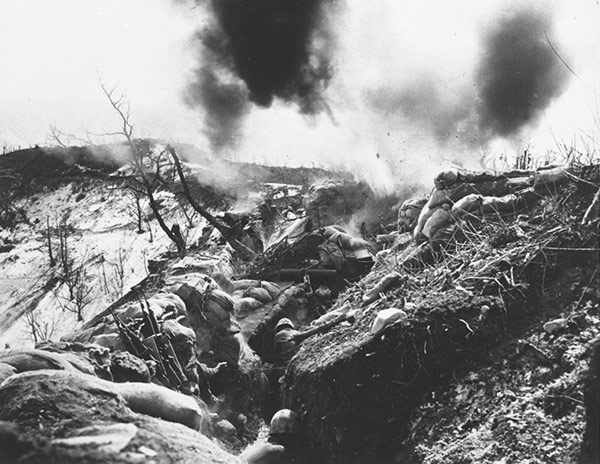
64. The essence of ridgeline battle conditions in Korea: marines in trenches crouch for cover as a Chinese 82mm mortar round lands on their positions. Most casualties on both sides were caused by mortar and artillery fire. (U.S. Navy photo.)
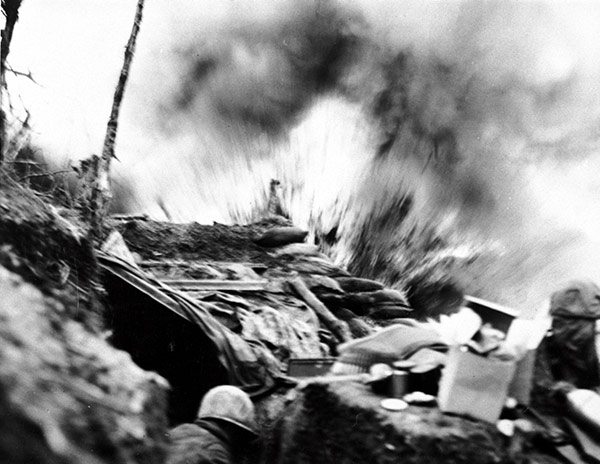
65. An enemy mortar round lands directly on a marine ridgeline position. (Defense Department/ Marine Corps photo.)
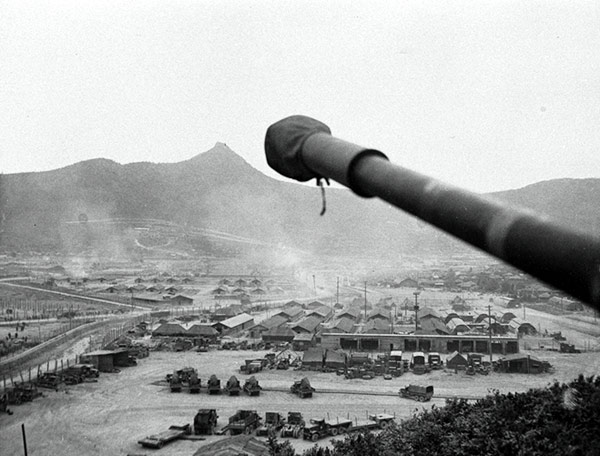
66. The central valley of Koje-do, where most of the compounds housing North Korean and Chinese prisoners of war were located. Near here also is where Brigadier General Francis T. Dodd, camp commandant, was captured by POWs and released only after another U.S. general issued a highly damaging statement indicating POWs had been killed and abused. (U.S. Army photo.)
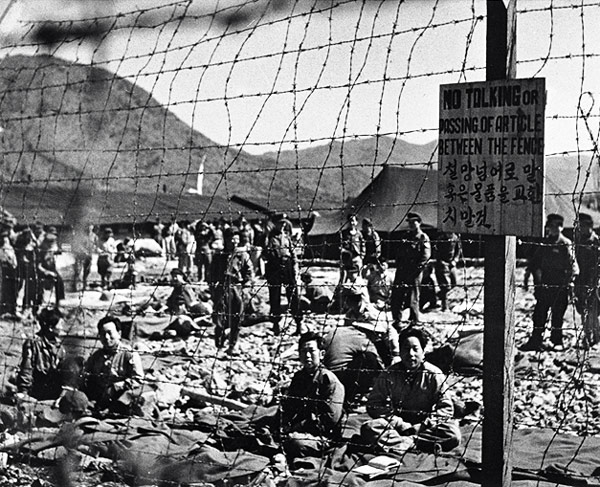
67. Extremely crowded POW enclosures on Koje-do reduced United Nations control and permitted Red POW leaders to direct riots and other violence by prisoners. (U.S. Army photo.)
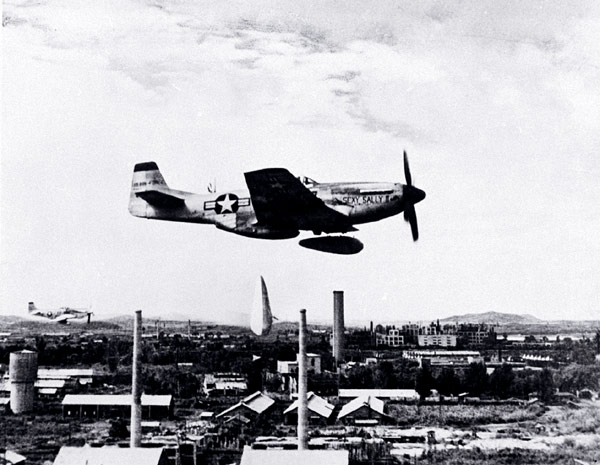
68. A Fifth Air Force F-51 Mustang drops napalm jellied gasoline tanks on an industrial target in North Korea in August, 1951. (U.S. Air Force photo.)
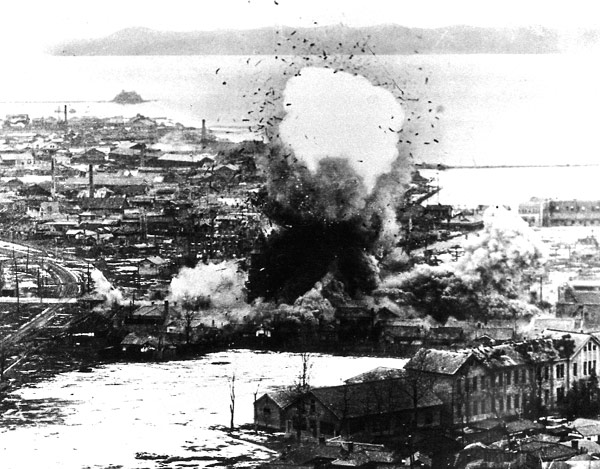
69. As the Korean War went on, American air power methodically demolished virtually everything in North Korea having any military significance whatsoever. Here supply warehouses at the east-coast port of Wonsan are bombed in July, 1951.
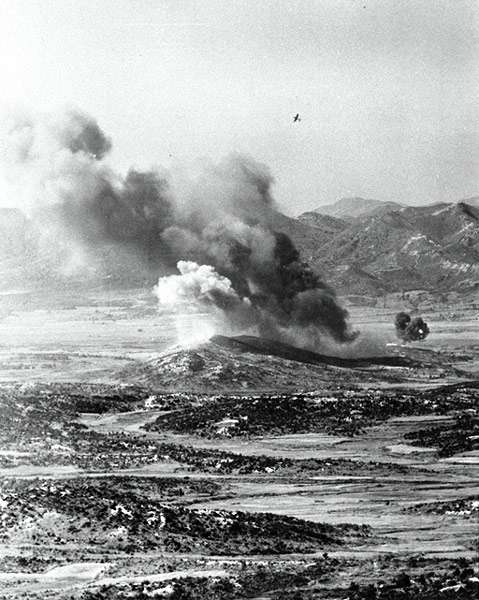
70. A marine F4U Corsair pulls up from a bombing run on a Chinese-held hill in western Korea in October, 1952. (U.S. Navy photo.)
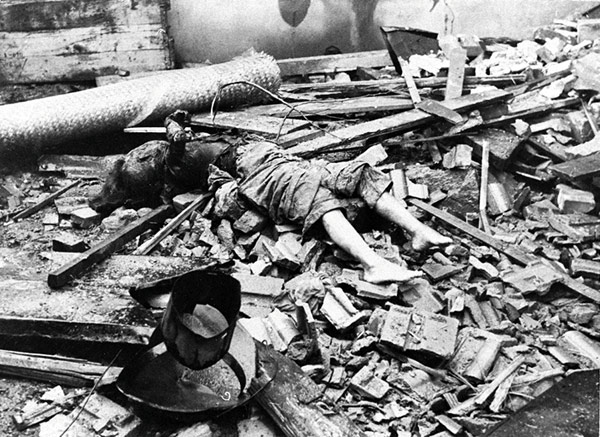
71. A widely distributed photo showing a child killed in what the Red Chinese called a 1953 U.S. B-29 attack on the Manchurian border city of Antung, opposite Sinuiju on the Yalu river. (Eastphoto.)
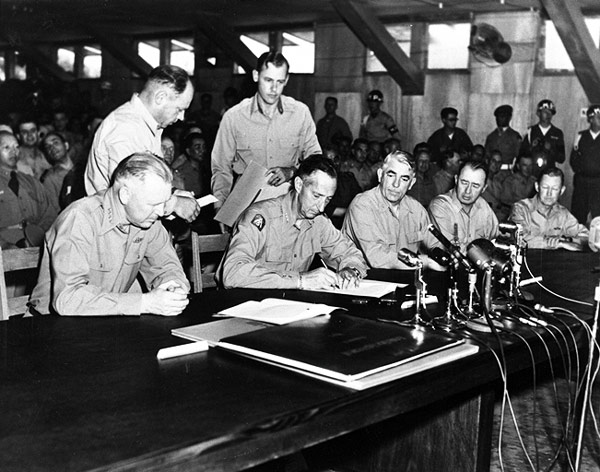
72. General Mark W. Clark, Far East commander, signs the Korean armistice agreement on July 27, 1953, after two years of negotiation, during which hundreds of thousands of men were killed and wounded in continued hostilities. (U.S. Navy photo.)
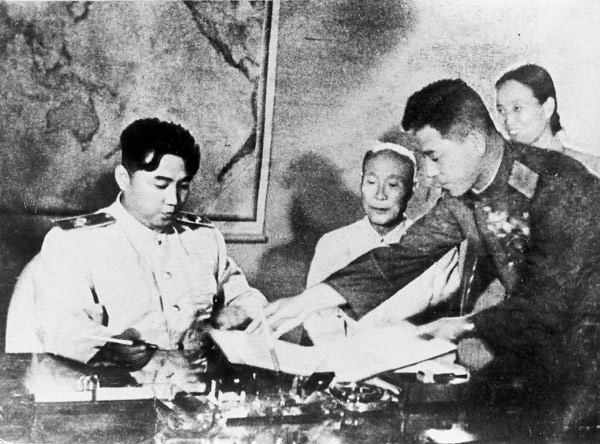
73. North Korean Premier Kim Il Sung prepares to sign armistice handed to him July 27, 1953, by General Nam Il, head of the communist delegation at Panmunjom. (Eastphoto.)
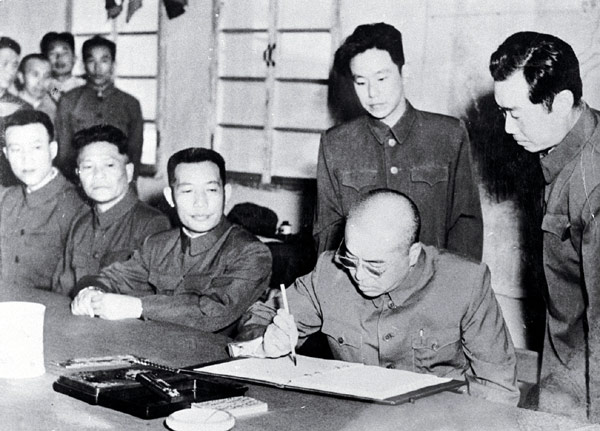
74. Chinese Communist commander Peng Dehuai signs Korean armistice at Kaesong. (Eastphoto.)


